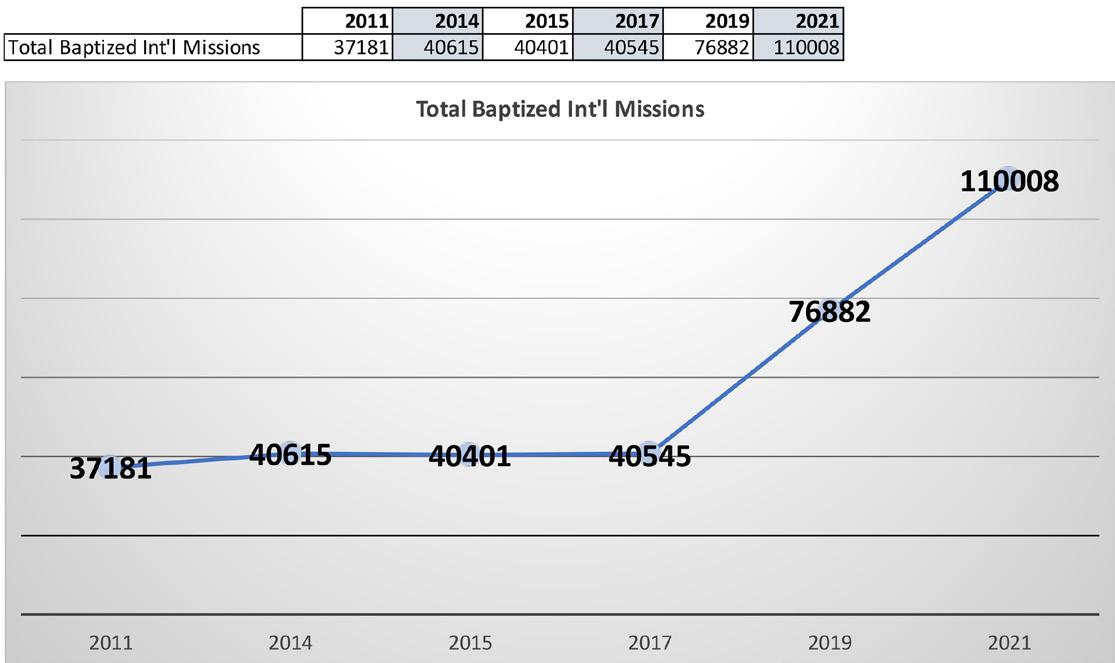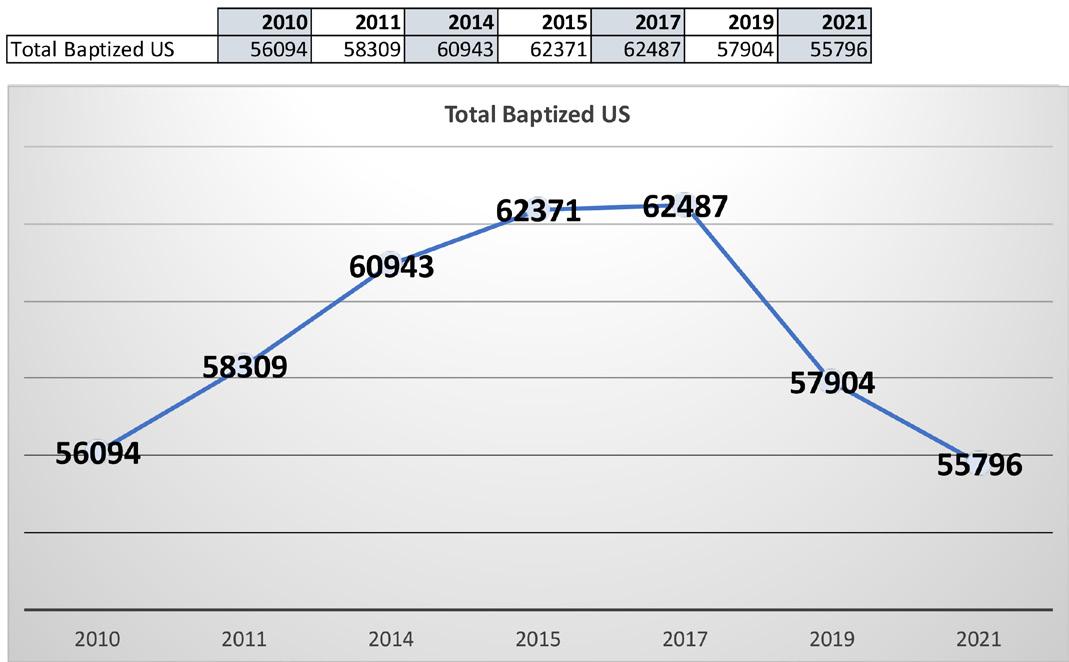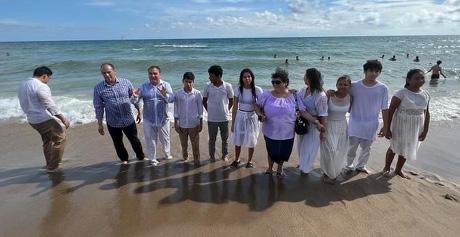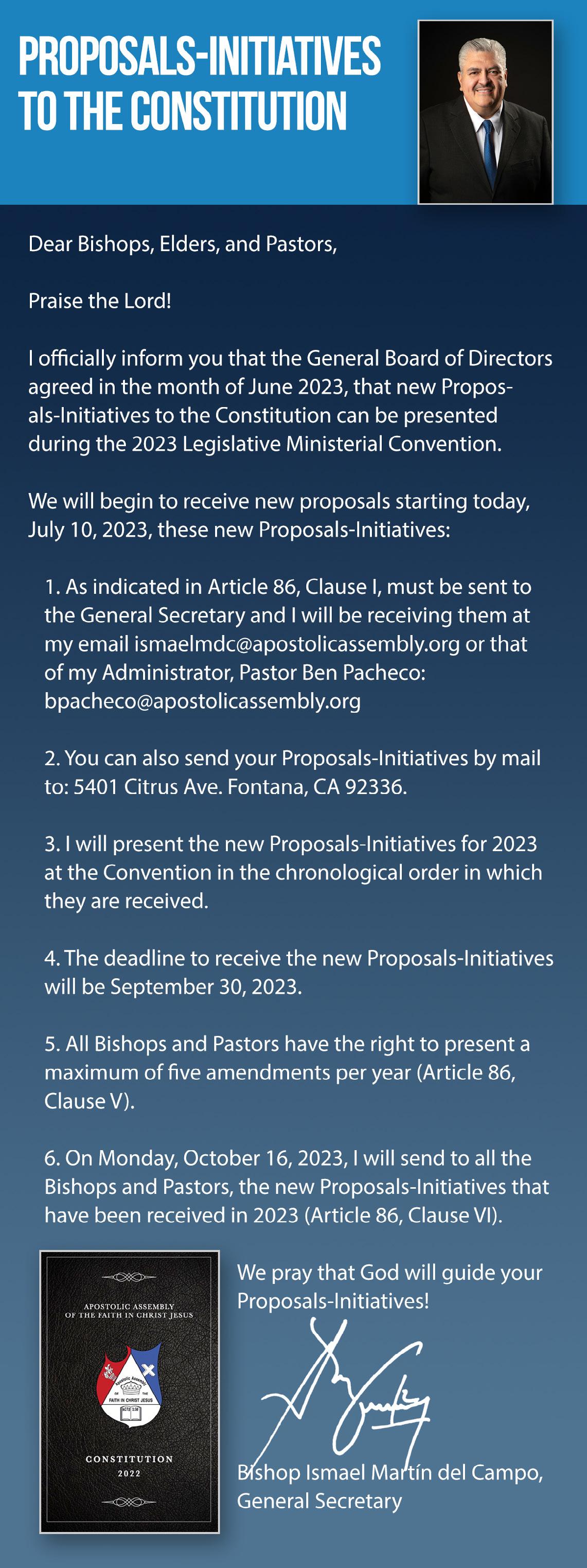
7 minute read
LET US PREACH THE GOSPEL OF THE KINGDOM TO ALL NATIONS!
OUTLINE OF THE APOSTOLIC ASSEMBLY’S HISTORICAL GROWTH 1906-2022
THE GREAT COMMISSION AND PENTECOST.
The Lord Jesus Christ clearly gave the Church its mission: “Go and make disciples of all nations” (Matthew 28:19); “And that repentance and forgiveness of sins should be preached in his name to all nations” (Luke 24:47).
However, upon resurrecting and before ascending to heaven, he instructed the Church to first wait for the promise of the baptism of the Holy Spirit.
And so, Pentecost was the starting point of the Great Commission: “And you shall be my witnesses in Jerusalem, and in all Judea and Samaria, and to the ends of the earth” (Acts 1:8).
The Model Of Jesus In The Early Church
• Jesus ministered and reached the largest number of followers through homes.
• Jesus performed many healings in homes.
• Jesus used houses to train and teach his disciples.
• Jesus forgave sins and transformed lives many people in homes.
• The Holy Spirit was poured out for the first time in a house.
The model of Jesus was the model of the Early Church, during the first century. The Church spread throughout all nations, through homes, under persecution, first from Judaism and then from the Roman Empire.
During the second and third centuries, the Early Church continued to carry out the Great Commission under the model of Jesus, through homes, since the church endured ten imperial persecutions, from the year 64 with Nero to the year 313 with the Edict of Milan, and also because the Empire made it illegal for Christians to build or have temples. Using the Jesus Model, churches won half the population of the Roman Empire to Christ.
1906 To 1912 From Homes
TO CHURCH PLANTING
• The Azusa Street Revival began in a house.
• The first Mexican Pentecostal believers conducted Bible studies in their homes, in addition to attending services at 312 Azusa Street.
• The Apostolic Assembly was born with a group of Mexican believers on Azusa Street. This group was expelled in 1909, upon receiving the revelation of the name of Jesus Christ. And this group continued to hold services and Bible studies in homes.
• In 1912 there is already a record in the city of Los Angeles of the first two congregations of the Apostolic Assembly. These were established in the home of Pastor Genaro Valenzuela (627 Alpine Street), and in the home of Minister Juan Navarro (1514 St. James Street).
Among the oldest reports of the Apostolic Assembly, we find records that measured growth by decades:
1912 To 1920
FROM 2 TO 11 CONGREGATIONS: A GROWTH OF 450%
Historical records reflect that by 1920 there were eleven apostolic congregations, ten in California: (Los Angeles, San Francisco, San Diego, Watts, Oxnard, El Río, San Bernardino, Colton, Riverside, and Calexico), and one congregation in Yuma, Arizona.
In this decade the pioneers are characterized by:
• Seeing every new convert as a potential minister.
• Being church planters
• Visiting homes to give Bible studies, hold services, or give testimony.
• Using an essentially Pentecostal and apostolic preaching. That is, they emphasized the baptism of the Holy Spirit by speaking in new tongues and water baptism in the name of Jesus Christ.
• And by plating new churches during the Spanish Flu Pandemic.
1920 TO 1930 FROM 11 TO 33 CHURCHES: A GROWTH OF 200%

During this decade, our pastors and ministers used the ministerial credentials from the “Pentecostal Assemblies of the World” (PAW). This apostolic organization was multiracial in its origin but ended up being a majority African-American corporation.
The Apostolic Assembly affirmed its doctrinal identity at its first convention in 1925.
Our organization had a team of leaders who complemented each other very well with their different gifts and abilities. Among them stood out Francisco Llorente, Marcial de la Cruz, Antonio C. Nava, Ramón Ocampo, Bernardo Hernández, Arturo Hermosillo, Pedro Torres and Pedro Banderas.
IN THiS DECADE, OUR FLEDGLiNG CHURCH:
• Maintained its Pentecostal-Apostolic preaching. This emphasis allows them to win many believers from trinitarian churches, who did not have the experience of the baptism of the Holy Spirit nor practiced the baptism in water in the name of Jesus Christ.
• Establishes its values and disciplines in its conventions from 1926 to 1930.
• The leadership instructs churches on how to train and select ministers.
• And it embraces the self-dependent model of the Church in the book of Acts. In other words, financial assistance or leadership assistance from other organizations is not sought, but each congregation establishes itself and sustains itself with its own resources.
1930
TO 1940:
FROM 33 TO 66 CHURCHES: A GROWTH OF 100%
Under the leadership of President Antonio C. Nava, the Apostolic Assembly registered as a religious corporation in the state of California. This consolidated its identity as the oldest Hispanic apostolic corporation.
Patriarch Nava focused his leadership on winning over the Spanish-speaking Mexican immigrant workers who made up the vast majority of the Hispanic population in the United States.
The team of leaders of this generation managed to make a transition towards a stable form of organization, which protected it from depending on the charisma of one leader. This dependence caused other organizations to disappear. And this generation also gave our Church a doctrinal and organizational model with biblical balance, without extremism.
This generation of pioneers was also visionary, immediately working to create resources such as its hymnbook, monthly Bible lessons, and the publication of its Official Newsletter:
In this decade the Apostolic Assembly:
• Learned to be a Resilient Church in the face of the Spanish Flu Pandemic, the Great Depression and the first waves of mass deportations.
• Embraced the economic model of tithing.
• Organized its societies: Dorcas, Youth “Messengers of Peace” and Men.
• And established its form of organization with bishops (episcopal government).
1940 TO 1950 FROM 66 TO 105 CHURCHES: A GROWTH OF 59%
• The Apostolic Assembly benefits from the maturity and experience of its first generation of leaders.
• In 1944, the leadership produced a first Constitution. And this document is the answer to the challenges of the accelerated growth of the Church.
• And the Assembly grows winning many “braceros” (immigrant farm workers) and many Mexican-American veterans, upon their return from World War II.
• The institutional model of the Assembly is consolidated, with the transition of leadership to President Benjamín Cantú. This will be key to consolidating the growth of the Apostolic Assembly. The Church will advance through agreements made by leaders and ministers and members, not through the charisma of any particular leader.
• There is an increase in the purchase and construction of temples.
1950 TO 1966 FROM 105 TO 236 CHURCHES: A GROWTH OF 124%
• In 1949 work in International Missions begins.
• “We speak English”: a new generation of MexicanAmerican leaders emerges.
• A second key team of leaders comes together. This team includes Benjamín Cantú, Antonio C. Nava, Epifanio Cota, Ernesto Cantú, Lorenzo Salazar, Phillip Rangel and others.
• “Towards New Horizons” is the motto of the new decade.
• There is a new and strong emphasis on personal evangelism and evangelistic crusades.
• The culture of church planting continues among its bishops and pastors.
• 66 new temples are consecrated. A record number.
• The Assembly creates the Departments of Missions and Christian Education.
1966 TO 1986 FROM 236 TO 445 CHURCHES: A GROWTH OF 88%
• In 1970 the pastors affirmed the institutional model of the church.
• Preaching during this time takes on an eschatological emphasis: “Revival before the King’s Arrival”.
• Apostolic preaching gains a new and very charismatic style.
• The Apostolic Assembly expands beyond the American Southwest and new districts are born in different regions of the country.
• A new leadership team arises for the moment, leaders such as Lorenzo Salazar, Antonio C. Nava, Daniel Jauhall, Roberto Ramírez, Baldemar Rodriguez, Manuel Vizcarra, Elías Duarte and Isaac Cota among others.
• The first church growth program arises, proposed by Bishop Richard Almaraz.
1986 TO 2010 FROM 445 TO 712 CHURCHES: A GROWTH OF 60%
• The Assembly continues to grow under its institutional model.
• In the United States, the Apostolic Assembly reaches almost every state in the nation. International Missions reaches more than 20 nations.
• A third generation of apostolic leaders arises for the task of leading the Church.
• Leaders search for new models. Many bishops and pastors implement the “Purpose Driven Church” model.
• At the 2004 General Convention, 52,000 baptized members are reported.
• In 2004, the seminar “Why and how the Assembly grows” was carried out: a study of 20 growing congregations at that time.
• In 2005 Road Map plan was launched: a plan to promote a spiritually healthy corporation and healthy congregations and families.
• The small group model of church begins to influence the Apostolic Assembly.
• The “Jesus Strategy” program was created in 2007 and presented at the 2007 Ministerial Convention.
• In July 2008, a National Seminar on the “Jesus Strategy” was held, but in September 2008 the cell-group program stopped as the national program.
• In 2009, an evaluation of the baptisms in water carried out in recent years shows that the retention of newly baptized in our congregations is just only the 10%.
• In 2010, 56,094 baptized members were reported, a growth of 7.87%.

• In 2010: a record number of 10,335 baptisms in water is reported.
2010 To 2022
• In November 2010 the “Jesus Strategy” program is relaunched, as the national program of the Apostolic Assembly. Pastors report every month their baptisms in water.
• In May 2013, the monthly monitoring of baptisms in the churches is cancelled.
• In 2013, 60,953 baptized members were reported, a growth of 8.66%.
• In 2013, 9,836 water baptisms were reported.
• In 2014, 60,943 baptized members were reported in General Convention.
• In 2015, 62,371 baptized members were reported.
• In 2017, 62,487 baptized members were reported in the United States.
• In 2019, 57,904 baptized members were reported.
• In 2021, 55,796 baptized members were reported (General Convention report).
• In 2021, International Missions reports more than 110,000 baptized members and mission work in 43 countries.
• In the census, as of December 31, 2022, 55,810 baptized members were reported in the United States.
CONCLUSION:
The Apostolic Assembly has in its spiritual DNA, to be a Church that believes in the power of the Holy Spirit, that believes in the perfect Word of God and that believes that God has given it the Mission of preaching the gospel to all nations, baptizing disciples in the name of Jesus, and teaching them to keep the commandments of Christ.

There are no excuses, because in the past our Church has flourished through world wars, pandemics, financial collapses, and mass deportations. Christ continues to build his Church!
Let us resume the Model of Jesus, like the Early Church, sowing the gospel in thousands of homes every week! In the name of Jesus Christ let us plant new churches in the five hundred thousand cities in all the nations that need the gospel!
Bishop Ismael Martín del Campo, General Secretary










